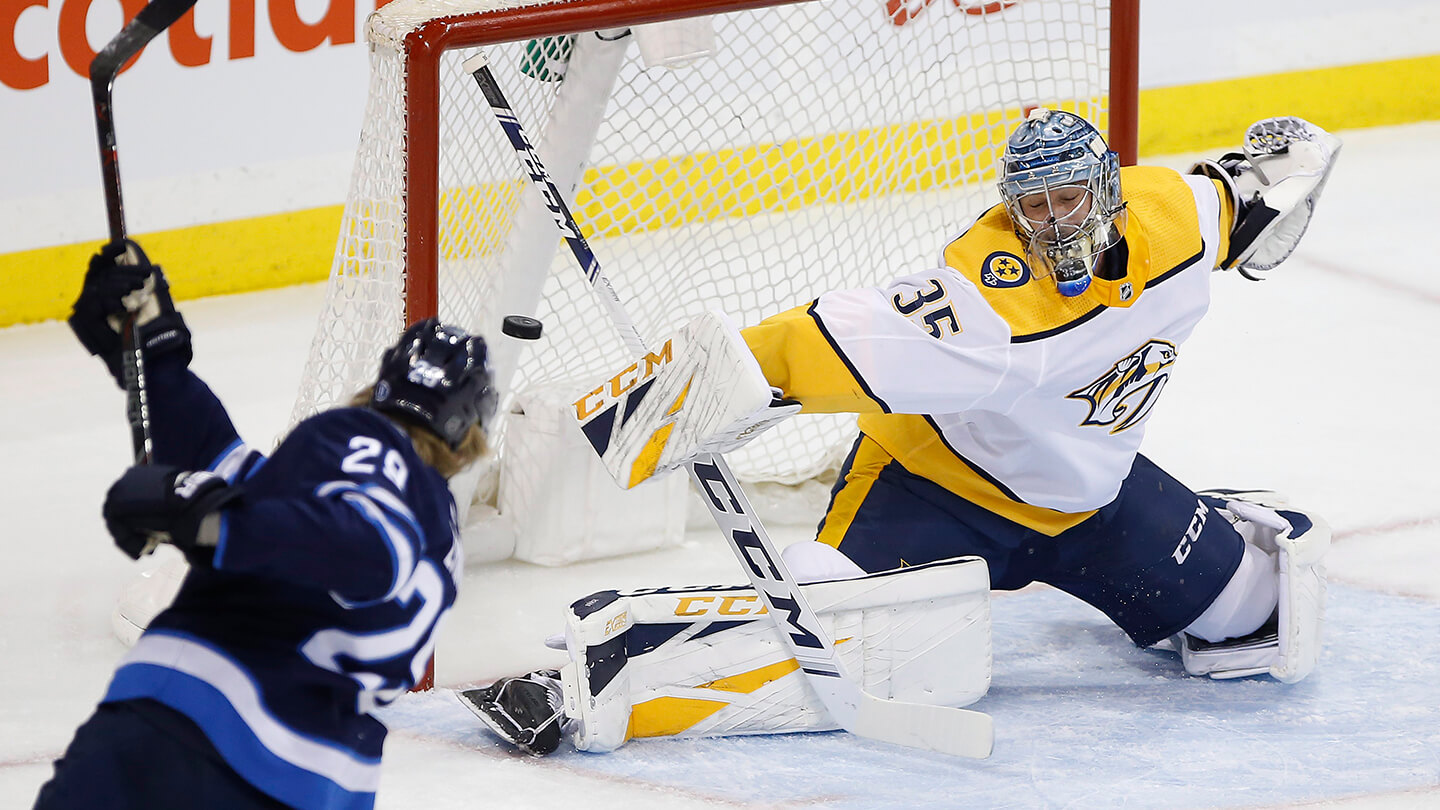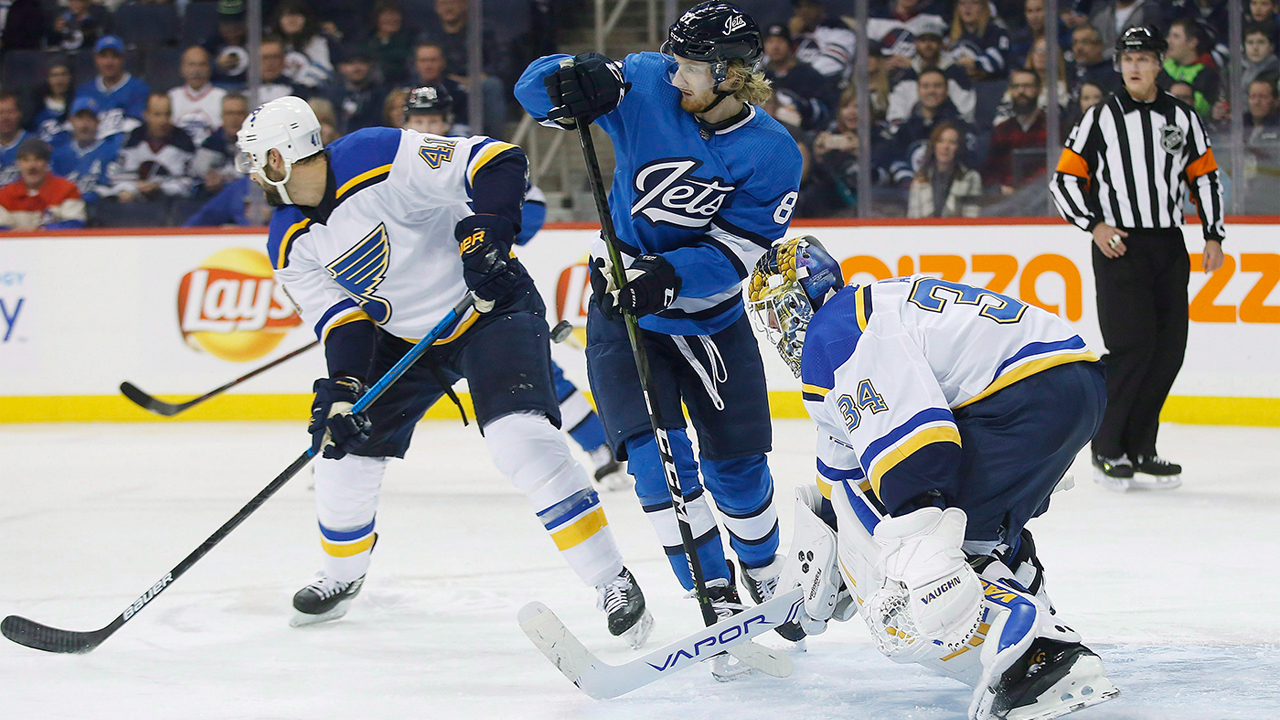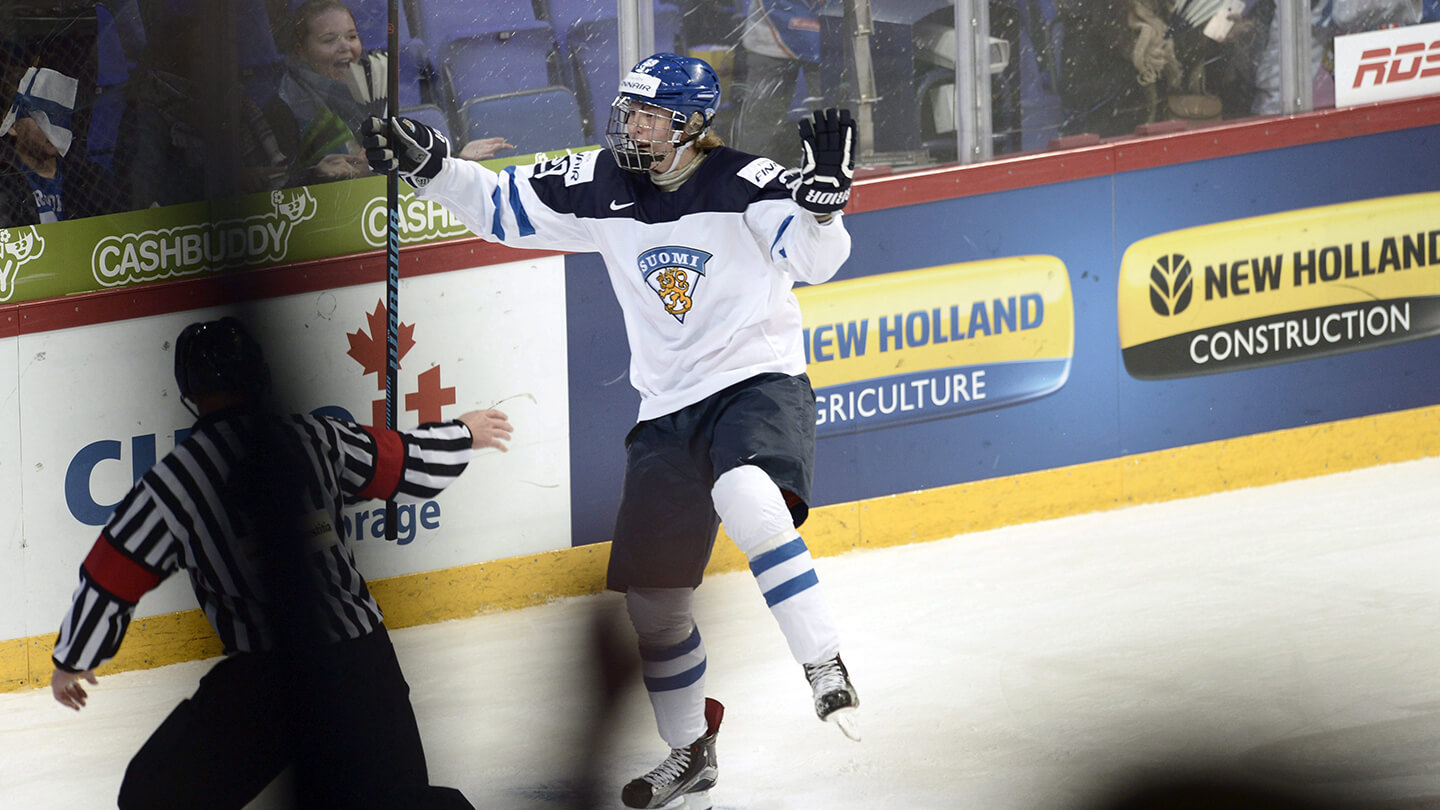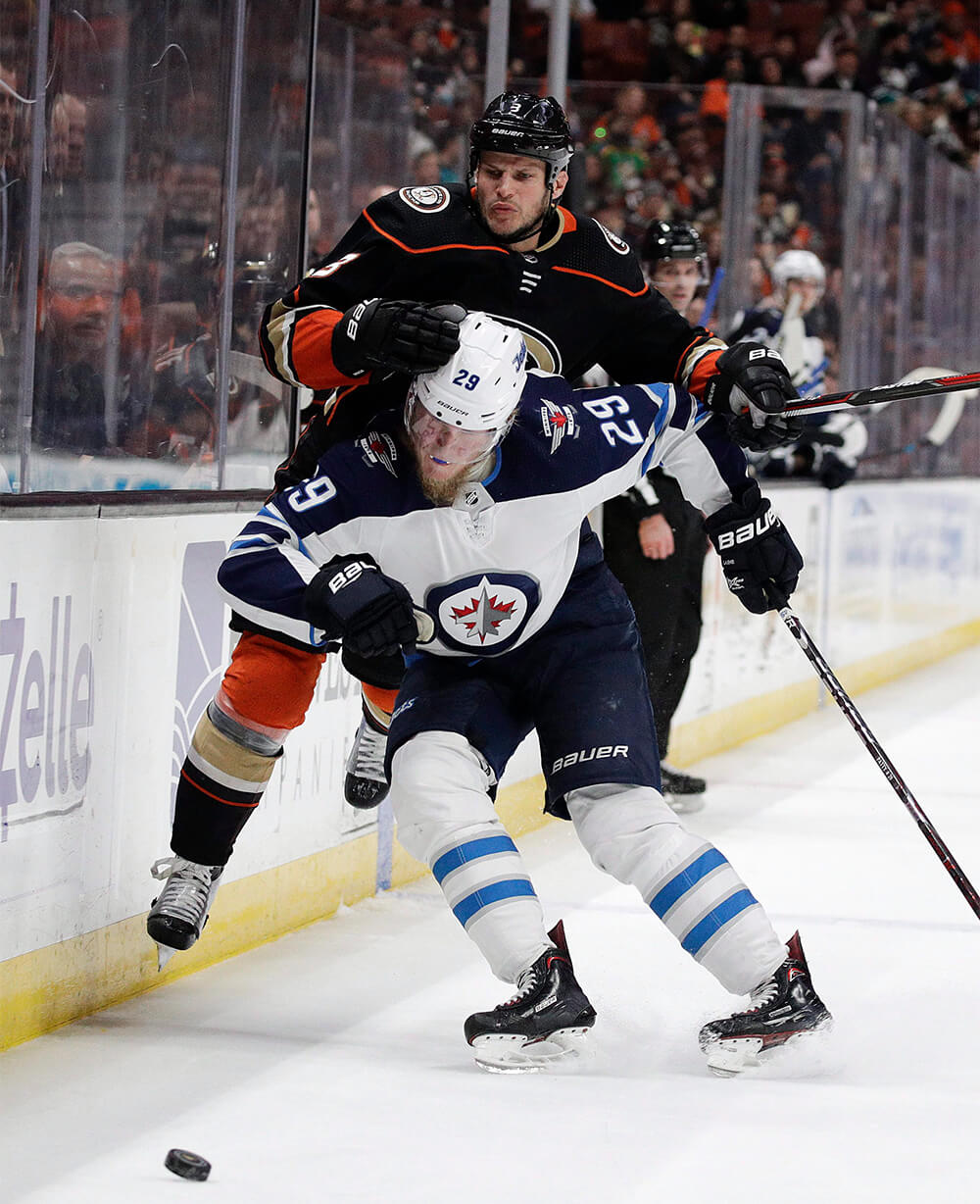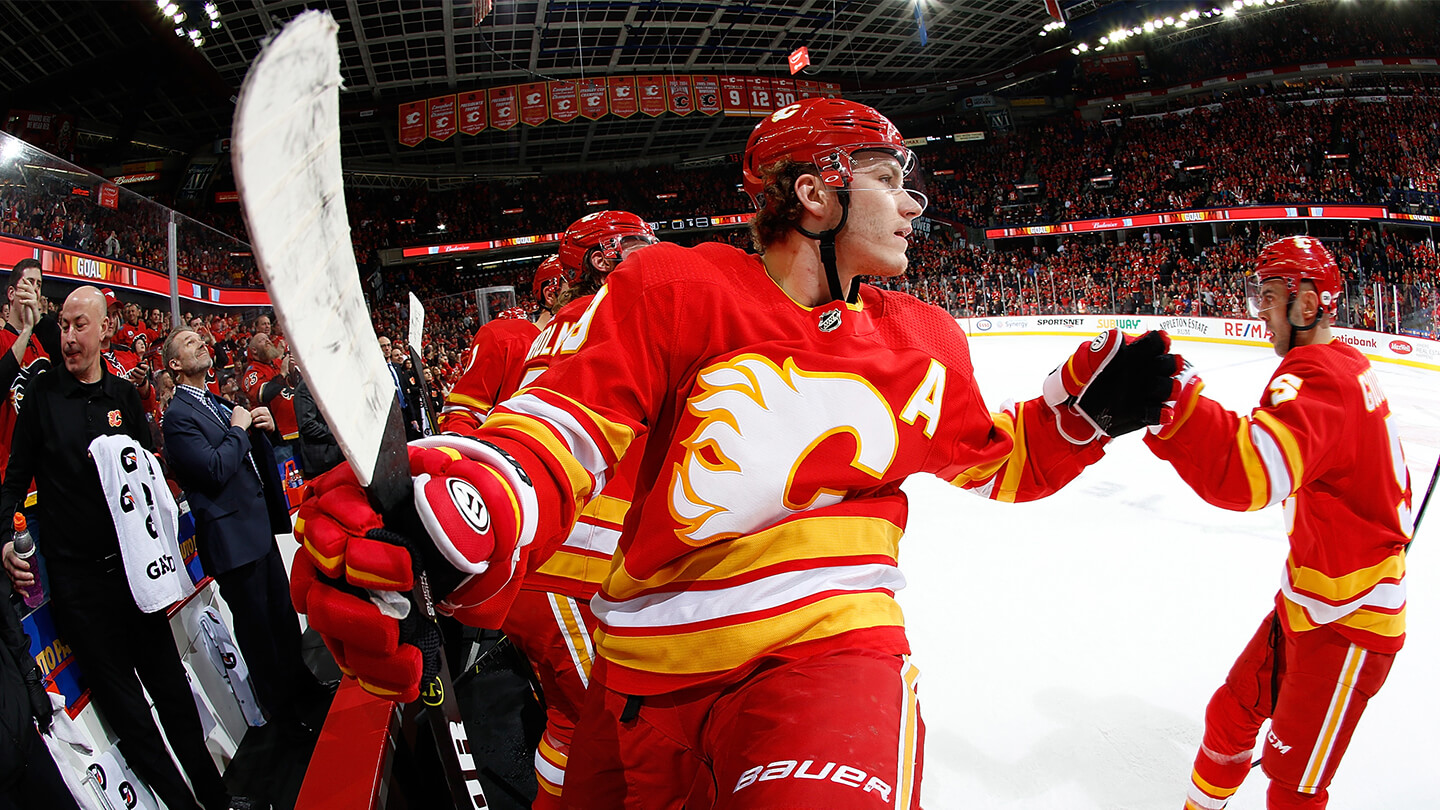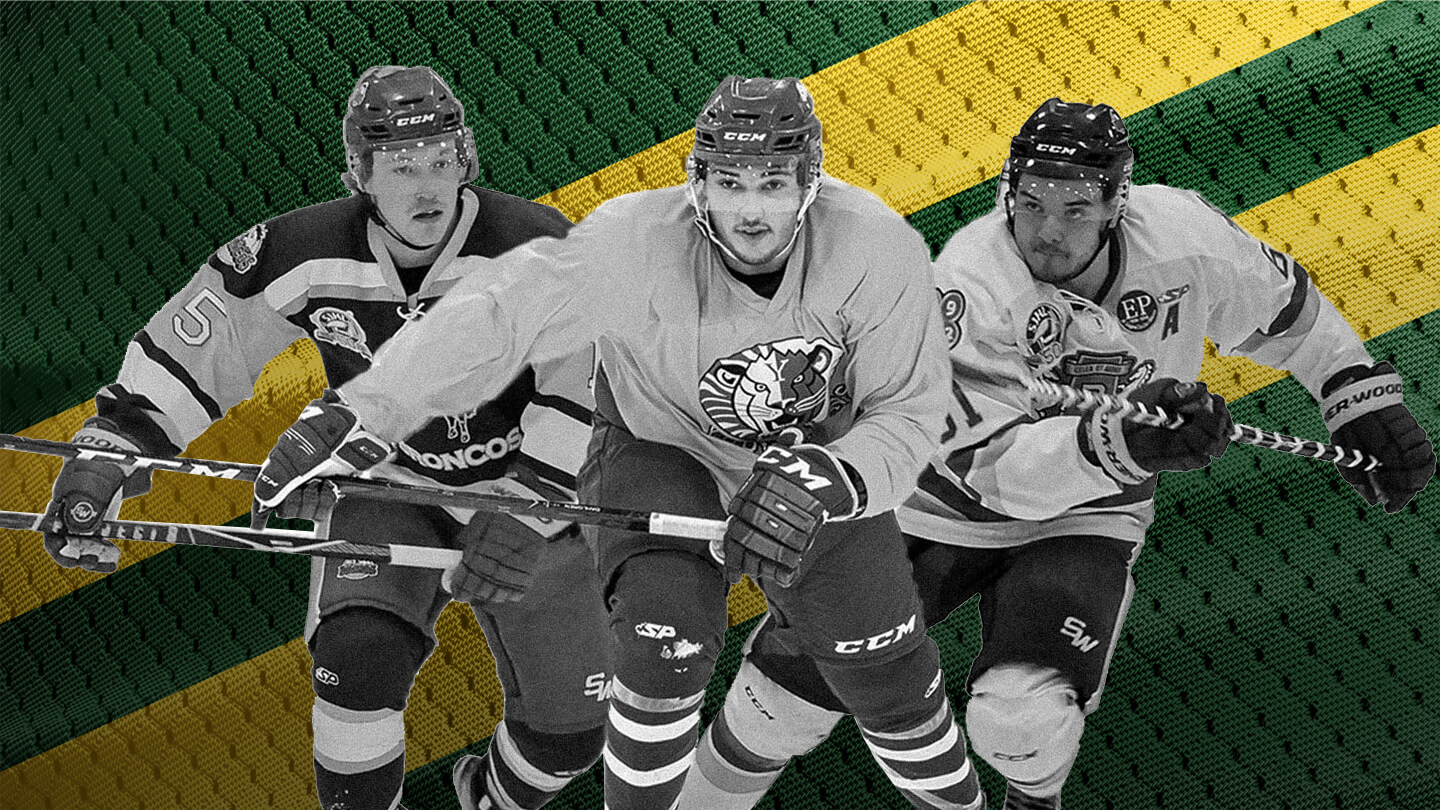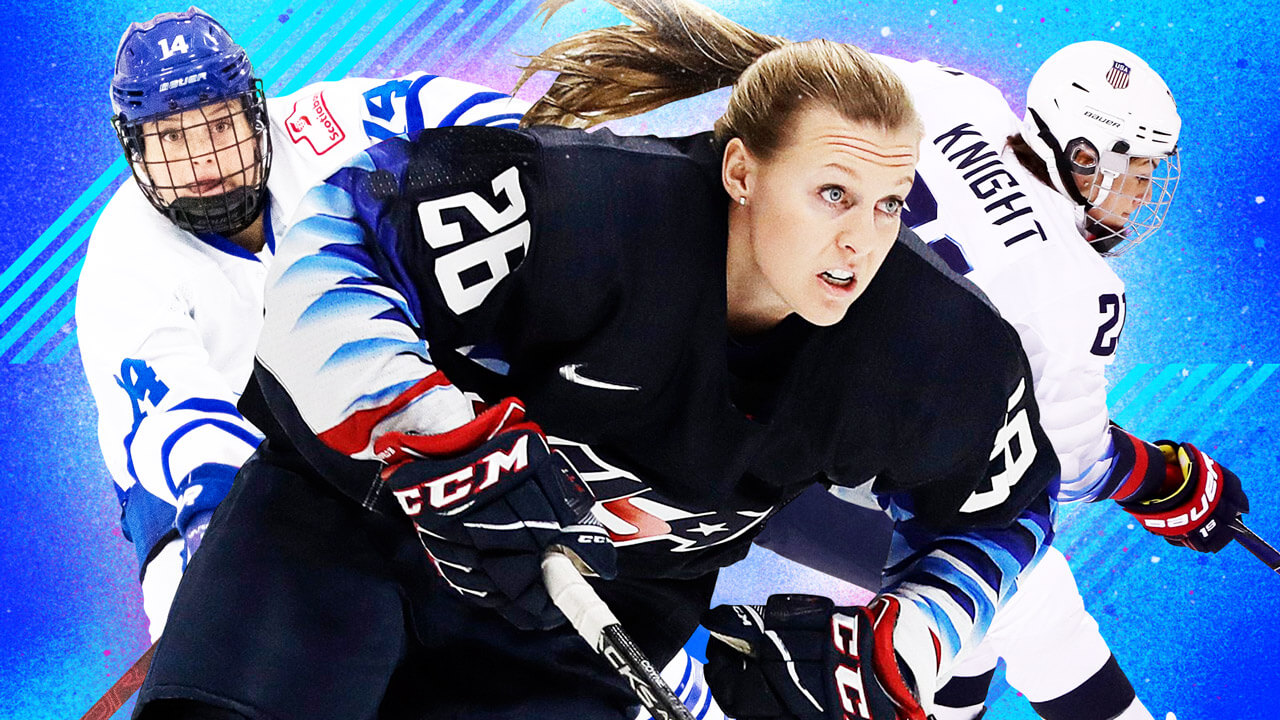Head coach Paul Maurice notices the reactions on the bench frequently when Laine lights the lamp. “It’s how it comes off his stick, the way the goals look. The numbers on the sheet you go, ‘Wow, that’s really good.’ But standing behind the bench and watching it happen is so unique,” Maurice says. “And it’s the players’ reaction sometimes, he shoots the puck and they can’t believe it. They have an appreciation even more than coaches or fans of what greatness is, because they live it every day.”
Maurice says he’s never coached a player who elicits so much fan excitement when he gets the puck in the offensive zone: “Anywhere in that end of the ice, there’s a chance that this thing is going to beat this guy. It’s kind of a built-in excitement in the game, whether he beats the guy or not.”
No Jets player can really put his finger on what it is that makes Laine’s delivery so effective. “If I could tell you, I think we’d all be doing it,” says Kyle Connor, Laine’s sometimes linemate, who had a career-high 34 goals this season. (Laine’s description of his shot doesn’t help answer the how: “It just comes naturally, so it feels easy,” he says). “There’s only a handful of guys like him on the planet,” Lowry points out, rattling off last names that need no firsts, “Stamkos, Kucherov, Ovechkin. There’s only a certain number of guys that have that lethal shot, and they don’t need a lot of time and space. He’s a unique individual. We want him to shoot the puck as much as he can.”
You can know Laine is armed with one of the best shots in the league, and still not quite understand it until you see it up close. Earlier this season, the Jets were doing a light off-day skate, and their practice goalie was in net. Laine crossed the blue line, got a pass, and one-timed it, top corner, like a rocket. “The goalie looks at his blocker and goes, ‘F—!’” Maurice says, laughing. “And I’m thinking, ‘Nobody stops that! And not the third guy, not you. Don’t take this so personally!’”



